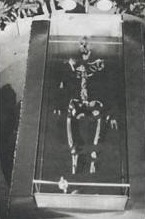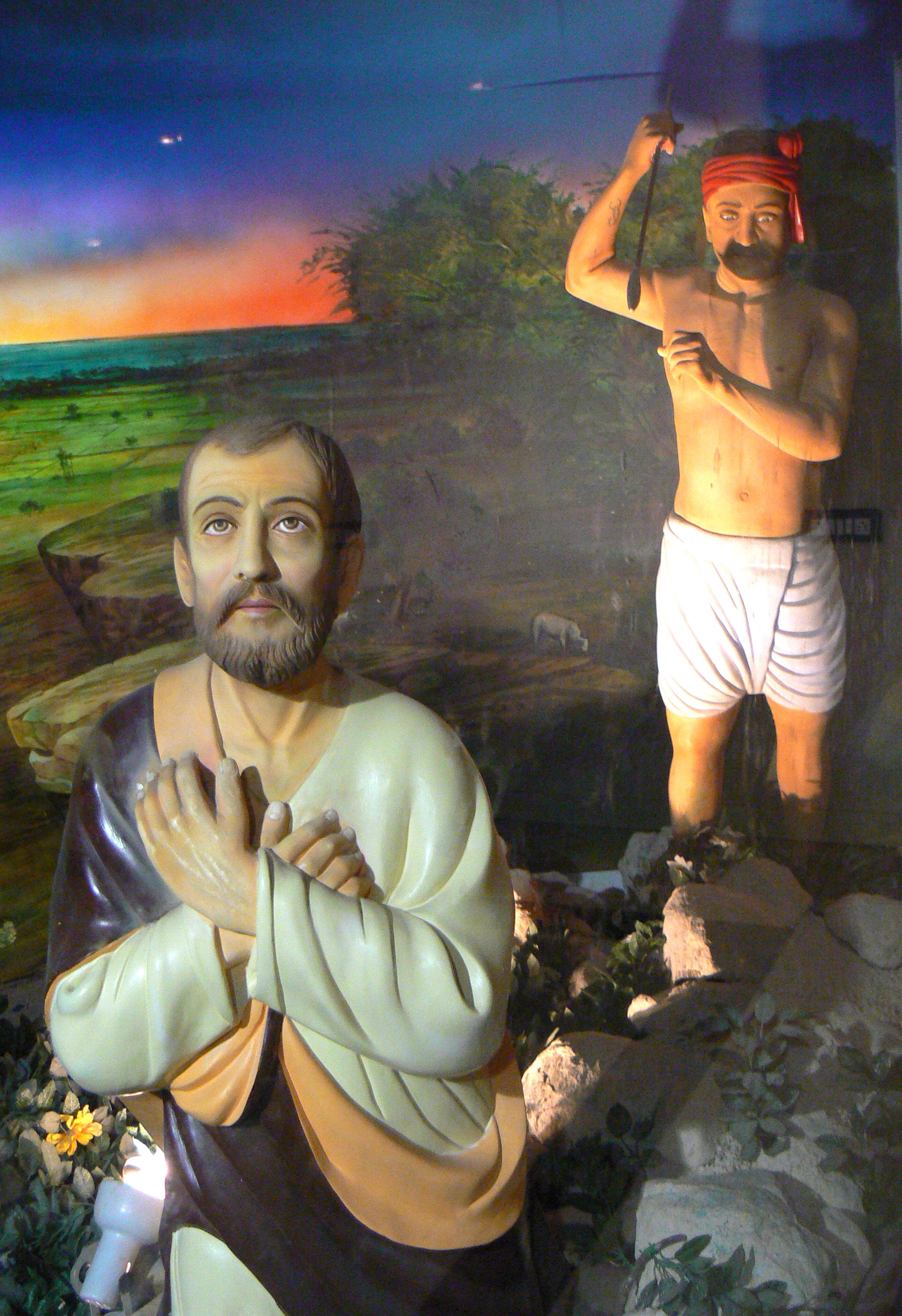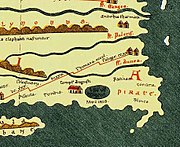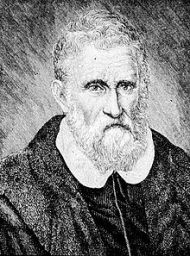“The Roman Catholic Church in India owes Hindus an abject apology for the blood libel she has perpetuated for centuries, falsely charging Hindus with the murder of St. Thomas even as she falsely charges Jews with the murder of Jesus.” – IS

 The Deccan Chronicle in Chennai carried on 2 July 2012 a “mystic mantra” column called “Feast of Thomas” (now deleted) by Fr. Francis Gonsalves, the former president of the Jesuit-run Vidyajyoti Theological College in New Delhi. The feast for St Thomas is celebrated on July 3rd every year in India. Fr. Francis knows better than this writer that the story of St. Thomas in India is untrue. He also knows that prestigious Jesuit schools in Europe would never refer to the Thomas in India story without first qualifying it as an unverified Gnostic moral fable. But Fr. Francis whose ancestors were Christian converts in Goa—by force or fraud we do not know—is an Indian Jesuit under a communal compulsion to deceive his congregation and support their fanciful apostolic aspirations for India. And there is also the politics of which his religious order is more than famous—or should we say infamous. Fr. Francis had a candidate for the Indian presidency in the person of a deracinated tribal convert called Purno Sangma. Therefore Fr. Francis must continue to perpetrate the St. Thomas in India lie as he believes that Thomas has already claimed India for Christ and that claim could have been actualized in the person of Purno Sangma. So Fr. Francis wrote:
The Deccan Chronicle in Chennai carried on 2 July 2012 a “mystic mantra” column called “Feast of Thomas” (now deleted) by Fr. Francis Gonsalves, the former president of the Jesuit-run Vidyajyoti Theological College in New Delhi. The feast for St Thomas is celebrated on July 3rd every year in India. Fr. Francis knows better than this writer that the story of St. Thomas in India is untrue. He also knows that prestigious Jesuit schools in Europe would never refer to the Thomas in India story without first qualifying it as an unverified Gnostic moral fable. But Fr. Francis whose ancestors were Christian converts in Goa—by force or fraud we do not know—is an Indian Jesuit under a communal compulsion to deceive his congregation and support their fanciful apostolic aspirations for India. And there is also the politics of which his religious order is more than famous—or should we say infamous. Fr. Francis had a candidate for the Indian presidency in the person of a deracinated tribal convert called Purno Sangma. Therefore Fr. Francis must continue to perpetrate the St. Thomas in India lie as he believes that Thomas has already claimed India for Christ and that claim could have been actualized in the person of Purno Sangma. So Fr. Francis wrote:
 I’m often asked by the people here in India and abroad, “When did Christianity come to India?” “Indian Christianity is about 2,000 years old,” I reply, adding, “Ever since St. Thomas, one of Jesus’ beloved disciples, came to India.”[1] Thus, we have the so-called “St. Thomas Christians”[2]—mainly from Kerala—whose ancestors received Jesus’ “Gospel” soon after his resurrection. On July 3, Christians will celebrate the feast of Saint Thomas.
I’m often asked by the people here in India and abroad, “When did Christianity come to India?” “Indian Christianity is about 2,000 years old,” I reply, adding, “Ever since St. Thomas, one of Jesus’ beloved disciples, came to India.”[1] Thus, we have the so-called “St. Thomas Christians”[2]—mainly from Kerala—whose ancestors received Jesus’ “Gospel” soon after his resurrection. On July 3, Christians will celebrate the feast of Saint Thomas.
The Gospel of John records three utterances of St. Thomas that give glimpses of his character. First, when Jesus desires to go to Bethany, bordering Jerusalem, the disciples try to prevent him from going since he was almost stoned there for claiming kinship with God. Thomas, however, sticks by Jesus, and says, “Let’s also go that we may die with him” (John 11:16). This shows Thomas’ courage and his commitment to Jesus.
Second, when Jesus announces his imminent death and assures his disciples that he’ll prepare a place for them, he adds, “You know the way to the place where I’m going.” Thomas answers candidly, “Lord, we do not know where you are going. How can we know the way?” (John 14:5). This prompts Jesus to reply, “I am the way.”
Thomas’ third utterance gives not only him, but also gifts us the appellation “doubting Thomas”. Being no pushover, Thomas asks for “proof” before he believes the unprecedented news of Jesus rising from the dead. But, on meeting the Risen Christ, he exclaims: “My Lord and my God!” (John 20:28). These words are etched in gold over the tomb of St. Thomas at the San Thome Cathedral, Chennai: a magnificent 16th-century Gothic church visited by innumerable pilgrims.
Having lived in Chennai, I cherish unforgettable moments at monuments built in memory of Apostle Thomas. I remember that morning of Sunday, December 26, 2004, when I was presiding over morning worship at San Thome Cathedral and the mighty ocean came crashing down upon Marina beach, leaving us distraught at the destruction wrought by the tsunami.
Two other churches in Chennai commemorate the Apostle: one built in 1523 atop “Saint Thomas Mount” near the airport, and, another big, circular one constructed in 1972 on “Little Mount”. The former contains the “Bleeding Cross”, believed to have been sculpted on stone by St. Thomas, while the latter rests beside the cave where the Apostle prayed.
Saints are not the exclusive property of one religion. St. Thomas teaches us all three things: (a) to be courageous and committed to a cause; (b) to be candid and to clarify things when in doubt; and (c) to be critical of things outside human experience; yet, also to believe in God who forever remains “The Beyond” while inspiring us to exclaim, “My Lord, my God!” in the everyday ordinariness of life. – Deccan Chronicle, Chennai, 2 June 2012
There is no historical evidence to support the legend that St. Thomas, called Judas Thomas in the Acts of Thomas, ever came to India. And when we say there is no historical evidence in Western literature, we say emphatically that there is no evidence for St. Thomas or Christianity in ancient Tamil literature either. Even up to the tenth century and Raja Raja Chola’s time, Tamil literature has no record of Christians or Christianity being present in the land.
The story of Thomas’s Indian sojourn exists only in the Acts of Thomas. This long religious romance was probably written by the Syrian Gnostic poet Bardesanes about 210 CE at Edessa, Syria. Bardesanes was familiar with India and had met and discussed Indian philosophy with Buddhist monks travelling west to Alexandria and Rome. It was therefore quite natural for him to place his moral fable in India, a land from which all kinds of religious ideas emanated.[3]
Bardesanes story is centred on the moral imperative that all Christians must lead a chaste and celibate life. In the story he has Judas Thomas, who is presented as a look-alike twin brother of Jesus, persuade a newly married royal couple not to consummate their marriage. This angers the Parthian king of the desert land where Thomas is present and he has to flee for his life to another part of the country. Here he comes into contact with another Parthian king called Gundaphorus—possibly a first century king of Gandhara i.e. North-West Pakistan—and promises to build him a palace. Thomas cheats the king of his money but succeeds in converting him to Christianity. He then leaves Gundaphorus and concerns himself with a talking donkey and a dragon who claims to be Satan. Thomas slays the dragon, but because of his interest in converting the women and girls of the area to Christianity and alienating them from family life, is called before a third Parthian king called Mazdai—Mazdai being a Zoroastrian name after the Zoroastrian deity Ahura Mazda—and ordered to leave the country. When Thomas ignores the king’s warning and converts the queen and her son, the king in exasperation at the apostle’s evil deeds orders him executed. He is then speared to death by soldiers on a royal acropolis and the body shortly afterwards taken away to Edessa.
In all records Thomas is executed on the Parthian royal acropolis and soon after buried at Edessa where a cult grows up around his tomb—until Marco Polo in his famous travel book puts his tomb on the seashore in an unnamed little town in South India. Marco, who never came to India, was repeating the stories told to him by Muslim and Syrian Christian merchants he met in Constantinople.
This is how St. Thomas got to South India. The Portuguese who knew Marco’s popular book Il Milione decided quite arbitrarily that Mylapore was the unnamed little town Marco was referring to [4]—and Mylapore also had a good harbour and a great heathen temple that could be turned into a Christian martyr’s tomb. As they say, the rest is history—and a falsified history at that!
Though Bardesanes represents Judas Thomas as a second Christ, he does not represent him as a good man. What we gather from the story in the Acts, and what Fr. Francis and his Church neglect to tell the faithful, is that
- Jesus was a slave trader who sold Thomas to Abbanes for thirty pieces of silver;
- Thomas was an antisocial character who lied to his royal employer and stole money from him;
- Thomas ill-treated women and enslaved them;
- Thomas practised black magic and was executed for disobeying the king’s order to stop the practise and leave the country;
- Thomas was Jesus’s twin brother, implying that the four canonical Gospels are unreliable sources which have concealed a crucial fact, viz. that Jesus was not God’s only begotten son. In fact, Jesus and Thomas were God’s twin-born sons. In other words, accepting the Thomas legend as history is equivalent to exploding the doctrinal foundation of Christianity.
Enough said about Judas Didymus Thomas.
About San Thome Cathedral which houses his fake tomb—the real tomb for St. Thomas is at Ortona, Italy—it has been established by reputed Jesuit and Indian archaeologists that the church stands on the ruins of the original Kapaleeswara Shiva Temple destroyed by the Portuguese in the sixteenth century. So do the churches at Little Mount and Big Mount stand on ruined Murugan and Shiva temples respectively. The “Bleeding Cross” Fr. Francis refers to and which is kept in the Portuguese church on Big Mount, has these words carved around the edge of it in Pahlavi script: “My lord Christ, have mercy upon Afras, son of Chaharbukht the Syrian, who cut this.” The cross is dated by experts to the eighth or ninth century.
Apostle Thomas was a Jew and the Roman cross would have been a most abhorrent symbol to him. Certainly he did not bring a cross—or a Bible for that matter; there was no Bible in the first century—to India. Christians did not use the Roman cross as a religious symbol until the third century or later. They used a fish sign with the Greek word ΙΧΘΥC (ikhthus meaning “fish”)—an acronym for JESUS—inscribed in its body to identify themselves and their cult. Curiously Indian Christianity has never referenced or employed a fish symbol in its religious culture. This is because there were no Christians in India before the fourth century. The cross and Bible were brought later by Syrian Christian refugees after the fourth century.
We wish to assure Fr. Francis and the Christian congregations that he has deceived, that Hindus are not going to demand the return of temple property the Church has forcefully taken from them over the centuries. But we do feel an apology for past crimes is in order and that some restraint is observed when perpetuating the communally-charged St. Thomas tale among the faithful—especially as Thomas’s persecution and death are falsely attributed to a Hindu king and his Brahmin priests. Arun Shourie has stated that the apology should include the following items:
- An honest accounting of the calumnies which the Church has heaped on India and Hinduism; informing Indian Christians and non-Christians about the findings of Bible scholarship [including the St Thomas legend];
- informing them about the impact of scientific progress on Church doctrine;
- acceptance that reality is multi-layered and that there are many ways of perceiving it;
- bringing the zeal for conversion in line with the recent declarations that salvation is possible through other religions as well.
Besides this apology, we feel the Archbishop of Madras-Mylapore may donate a piece of the vast estate Bishop’s House stands on for a memorial to the courageous Hindus who resisted the Portuguese when they with the help of Franciscan, Dominican and Jesuit priests were destroying the Kapaleeswara Shiva Temple by the sea.
The Archbishop of Madras-Mylapore, who may be an honest man unlike his predecessors, also must stop perpetuating the claim that Tiruvalluvar was a disciple of Thomas and a Christian convert. Tiruvalluvar lived a hundred years before Christ and anybody who has read the Tirukurral can see that this claim is a malicious falsehood.
The St. Thomas legend is now part of Indian history and Indian history must be told according to the known facts, not according to the fabricated anti-national theories of Indian Jesuits and Marxist historians. Even Pope Benedict has denied that St. Thomas came to South India—never mind that his editors changed his statement the next day to include South India because Kerala’s bishops had threatened secession or worse if the Church did not support their dearly held tale of origins.
Dr. Koenraad Elst, educated in Europe’s most prestigious Catholic university at Leuven, Belgium, writes in his foreword to The Myth of Saint Thomas and the Mylapore Shiva Temple: “It is clear enough that many Christians including the Pope have long given up the belief in Thomas’s Indian exploits, or—like the Church Fathers—never believed in them in the first place. In contrast with European Christians today, Indian Christians live in a 17th century bubble, as if they are too puerile to stand in the daylight of solid historical fact. They remain in a twilight of legend and lies, at the command of ambitious “medieval” bishops who mislead them with the St. Thomas in India fable for purely selfish reasons.”
What a sad observation on Indian Christians who have access to the best education and health care in the country. And what a shrewd observation on Indian bishops who are probably the most wealthy, corrupt, and politically astute caste living in India today.
› Francis Gonsalves teaches systematic theology at Jnana-Deepa Vidyapeeth, Pune.
› Ishwar Sharan is the author of The Myth of Saint Thomas and the Mylapore Shiva Temple, Voice of India, New Delhi.
1. India’s political leaders are fond of telling their constituents and the nation that Christianity arrived in India before it arrived in Europe. This historical conceit is not true. Apostle Paul says in Romans 15:24 & 15:28 that he plans to visit Spain (which already had a Christian community). In Acts 19:21 he travels from Ephesus to Greece—Macedonia and Achaia—en route to Jerusalem, and then on to Rome. This took place in the 40s CE—some historians say he was writing after 44 CE. So even if it was true that Apostle Thomas landed in Kerala in 52 CE—the spurious date is of 19th century origin—Christianity would still have arrived in Europe a decade earlier.
2. Thomas of Cana, also known as Knai Thoma, led the first group of 72 Syrian Christian families to India in 345 CE. There is no record of Christian communities in India prior to this date. Thomas of Cana and his companion Bishop Joseph of Edessa also brought with them the tradition of St. Thomas the Apostle of the East. Later, Christian communities in Kerala would identify Knai Thoma with Mar Thoma—Thomas of Cana with Thomas the Apostle—and claim St. Thomas had arrived in Kerala in AD 52 and established the first Christian church at Musiris—the ancient port near present day Kodungallur—the main trading centre of the day.
The Rev. Dr. G. Milne Rae of the Madras Christian College, in The Syrian Church in India, did not allow that St. Thomas came further east than Afghanistan (Gandhara). He told the Syrian Christians that they reasoned fallaciously about their identity and wove a fictitious story of their origin. Their claim that they were called “St Thomas” Christians from the 1st century was also false.
Syrian Christians were called Nasranis (from Nazarean) or Nestorians (by Europeans) up to the 14th century. Bishop Giovanni dei Marignolli the Franciscan papal legate in Quilon invented the appellation “St Thomas Christians” in 1348 to distinguish his Syrian Christian converts from the low-caste Hindu converts in his congregation.
3. The oriental ubiquity of St. Thomas’s apostolate is explained by the fact that the geographical term “India” included, apart from the subcontinent of this name, the lands washed by the Indian Ocean as far as the China Sea in the east and the Arabian peninsula, Ethiopia, and the African coast in the west.
Ancient writers used the designation “India” for all countries south and east of the Roman Empire’s frontiers. India included Ethiopia, Arabia Felix, Edessa in Syria (in the Latin version of the Syriac Diatessaron), Arachosia and Gandhara (Afghanistan and Pakistan), and many countries up to the China Sea.
In the Acts of Thomas, the original key text to identify St Thomas with India (which all other India references follow), historians agree that the term India refers to Parthia (Persia) and Gandhara (Pakistan). The city of Andrapolis named in the Acts, where Judas Thomas and Abbanes landed in India, has been identified as Sandaruck (one of the ancient Alexandrias) in Balochistan.
4. Marco Polo had written, “It is in this province, which is styled the Greater India, at the gulf between Ceylon and the mainland, that the body of Messer St. Thomas lies, at a certain town having no great population.”
So Marco’s reference is to a town on the Gulf of Mannar and not to Mylapore at all!









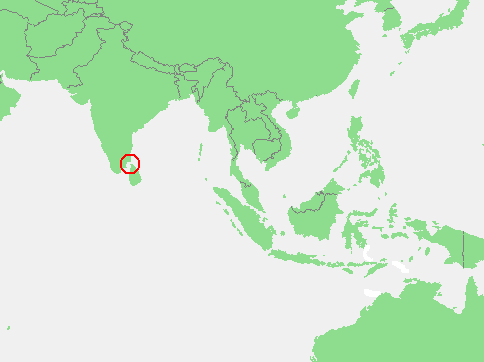























 The real miracle is that nobody has cut this ‘St. Thomas’ pole down and carried it away to their puja room or sold it to a European museum!
The real miracle is that nobody has cut this ‘St. Thomas’ pole down and carried it away to their puja room or sold it to a European museum!








